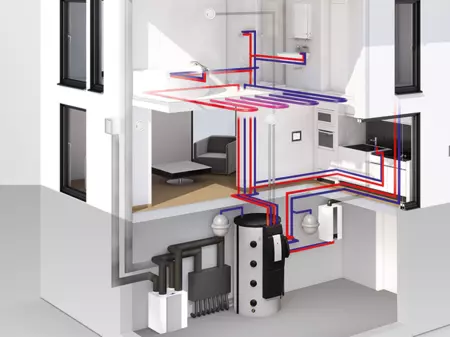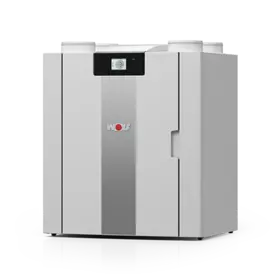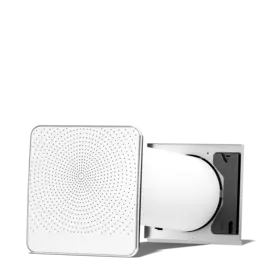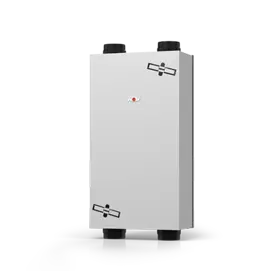If you have installed a controlled mechanical ventilation system, then window ventilation is no longer necessary. The ventilation system will handle this much more efficiently and effectively. The system will continuously bring fresh air into the house and remove moisture as well as pollutants. Naturally, you can still open the windows if you like.
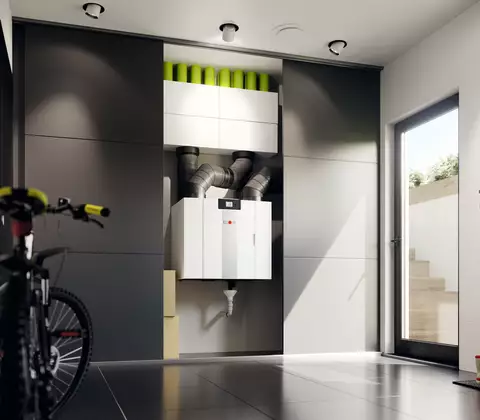
Understanding mechanical ventilation
With a ventilation system, you benefit continuously from clean air without literally tossing energy out the window. Here we explain the other advantages, describe the various types available and share information about ventilation systems in new or existing buildings.
Table of contents
Ventilate your home intelligently
A poor indoor atmosphere – with too much CO2 and possibly even fine dust, pollen or mould spores – can negatively impact your health. Regular ventilation is therefore essential. The classic method of window ventilation has a number of disadvantages, however. A smart alternative can be found in modern home technology.
Controlled mechanical ventilation automatically ensures fresh, filtered air around the clock and also saves on heating costs. It is now a standard measure, especially in new buildings. But practical retrofit options are also available. Plus, the state offers subsidies for the installation of an energy-saving ventilation system.
03. Types of mechanical ventilation systems
Various types of ventilation systems are available:
Central ventilation systems
Central ventilation systems ventilate the entire home with a single appliance. Modern controlled mechanical ventilation systems with extract and supply air are the optimal choice. The e-book provided above will tell you all about the various types (supply and extract air, supply air only, extract air only) as well as their pros and cons.
The fans of a central ventilation system are integrated into supply and extract fittings, which are located in various rooms. Air ducts in the walls, ceilings and floors distribute the fresh and filtered outdoor air throughout the whole house.
The air is transported to the supply rooms – such as the living room and bedrooms. The fan of the extract fitting draws the used air out of extract rooms like the kitchen and bathroom, creating a slight negative pressure. As a result, the air flows from the supply rooms into the extract rooms and is distributed evenly throughout the home in this way. However, you won’t notice any annoying drafts from these air flows.
Modern fans are very low-energy and quiet. Sensors detect when the room air quality is poor and how much ventilation is required. In addition to automatic control, the mechanical ventilation can also be manually adjusted to your needs.
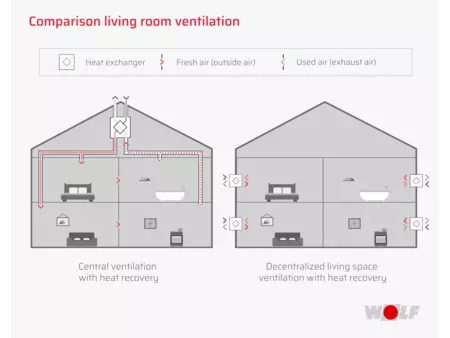
Decentralised ventilation systems
Decentralised ventilation systems, such as the WOLF CWL-D-70, only supply fresh air to individual rooms. They are therefore used specifically in rooms that require especially good air exchange. Some modern decentralised appliances also feature heat recovery.
Decentralised ventilation systems are particularly simple to install. This makes them well-suited for renovations. They are also commonly used in multi-family dwellings and individual apartments.
04. Which types off ventilation systems are suited to new and old buildings?
It is important to plan the ventilation system carefully from the start – only then will it function smoothly when installed. Take special care to ensure that the system is a good fit for your building.
Ventilation systems in new buildings
If you are planning a new build, you should definitely consider a controlled mechanical ventilation system with heat recovery. Modern new buildings are air-tight to keep in as much energy as possible.
As a result, they require plenty of ventilation, which is best provided by a central ventilation system with extract and supply air. This is the current state of the art. The heat recovery also ensures low heating requirements, which translates into lower heating costs.
Ventilation systems in existing buildings
In an existing building, the planning and installation of an air distribution system is more involved than for a new build. This is why decentralised ventilation systems are a good choice here. They allow you to specifically ventilate the rooms with particularly high moisture loads – such as the kitchen or bathroom – without major alterations or expense.
The situation is different if you are planning major renovations anyway. In that case, it can certainly be worthwhile to install a central ventilation system.
A ventilation system with heat recovery is the current state of the art in new builds and provides high energy efficiency. It will pay for itself very quickly thanks to the savings on heating costs and the attractive subsidies available. But even in existing buildings, a ventilation system is worthwhile. It improves the indoor atmosphere, protects the building fabric and lowers your heating costs.
Frequently asked questions about ventilation systems
No, it will stir up even less dust than classic window ventilation. The ventilation system ensures a slow air exchange without drafts. Plus, the filter protects against dust and dirt from outside.
It is advisable to have the ventilation system serviced about every two years. The condition of the filters should be checked regularly (about every three months), and they should be changed when necessary.
There is no single answer to this question. You can expect the system to last about 20 to 25 years. WOLF provides a 5-year guarantee on the appliance, material and labour for all its products.
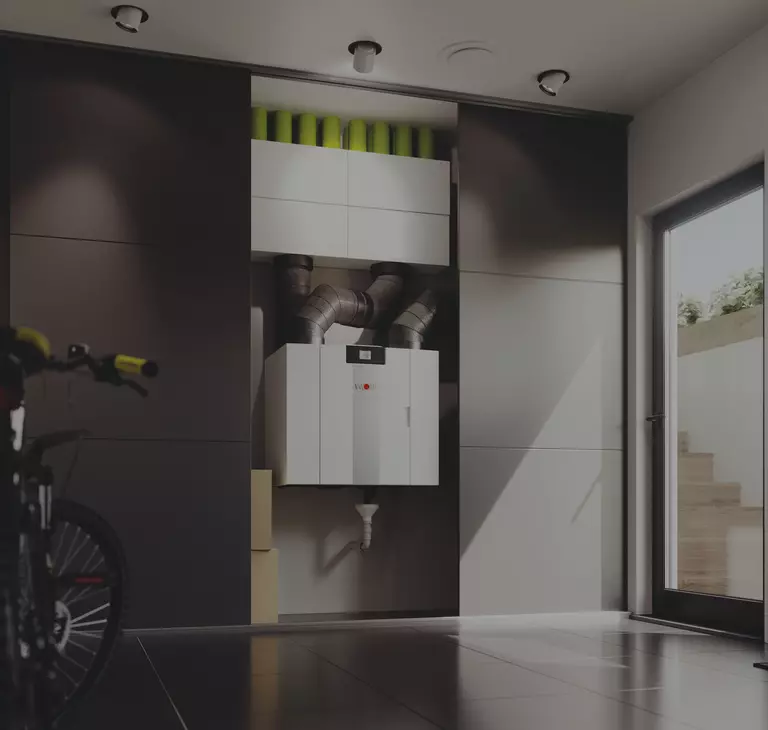
Our recommendation: The mechanical ventilation CWL-2
50 years of experience have gone into the development and design of our top seller in the residential ventilation sector.
